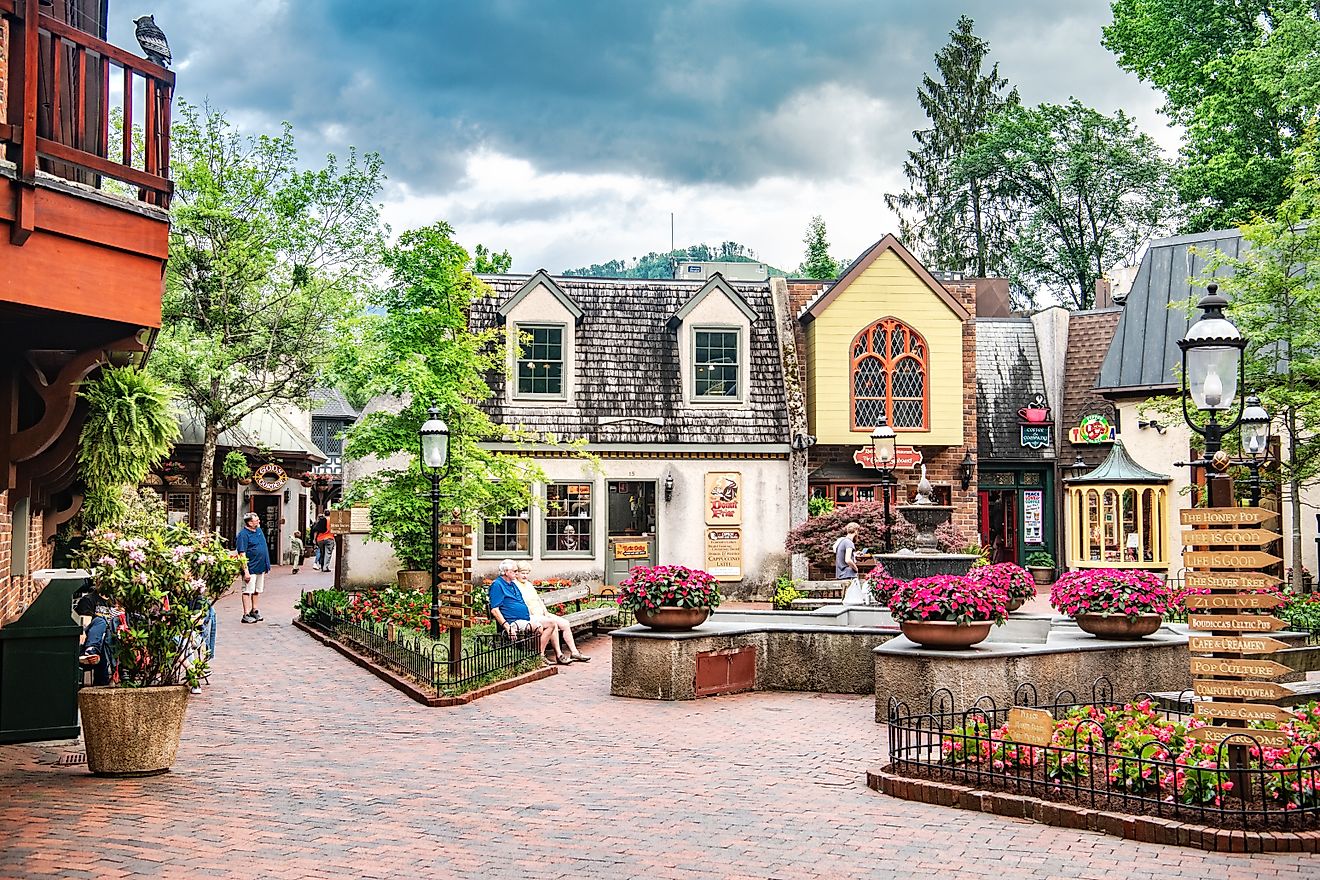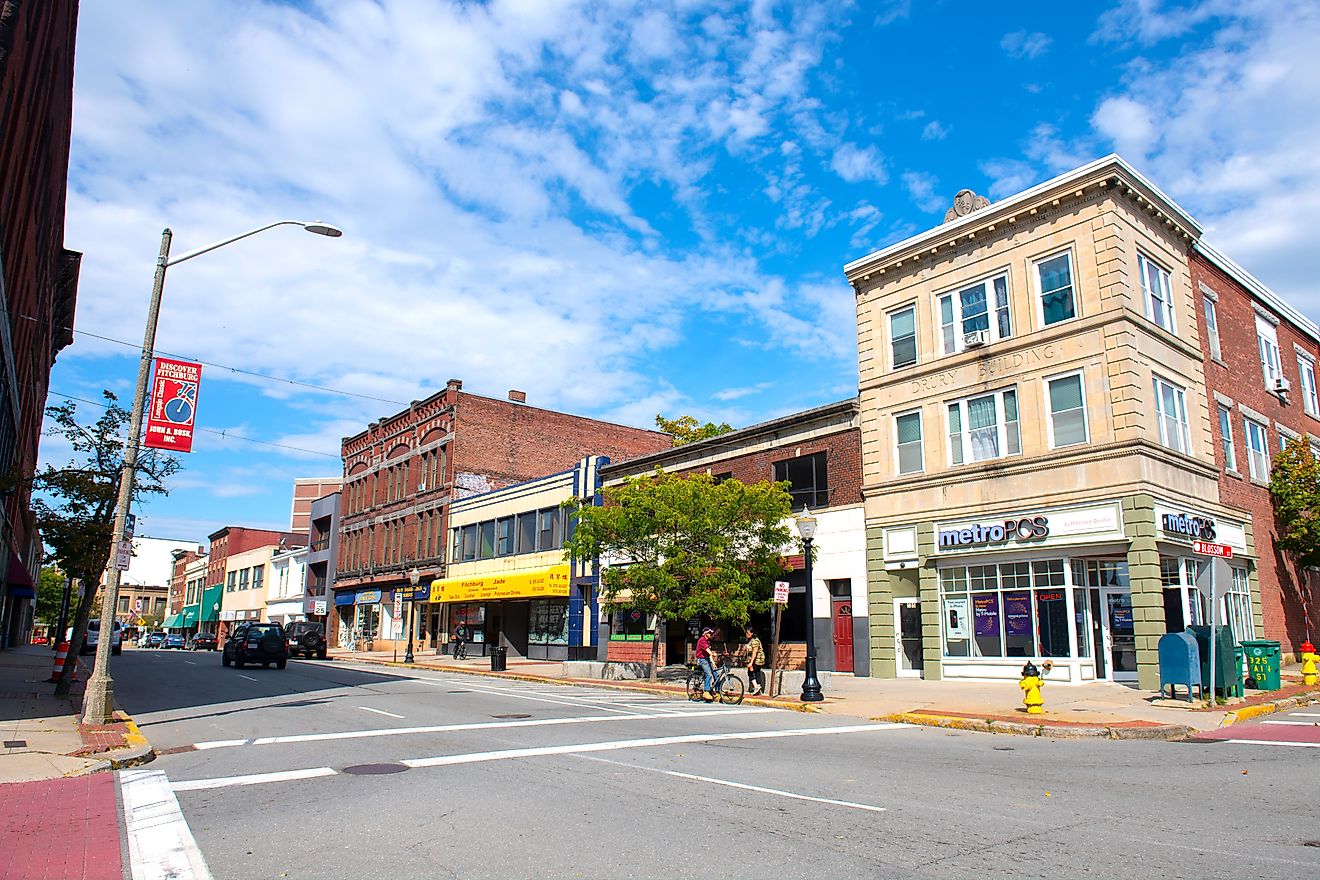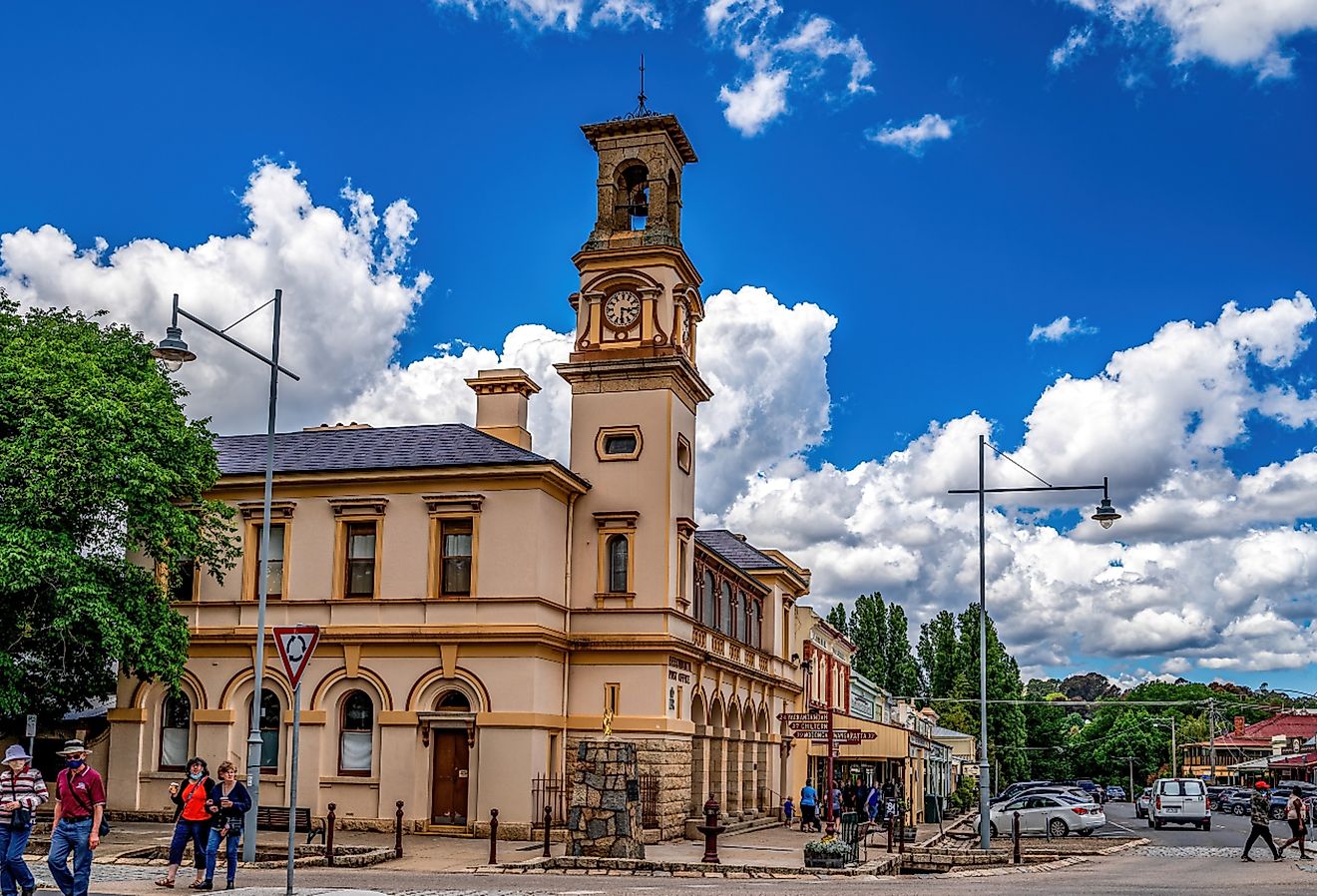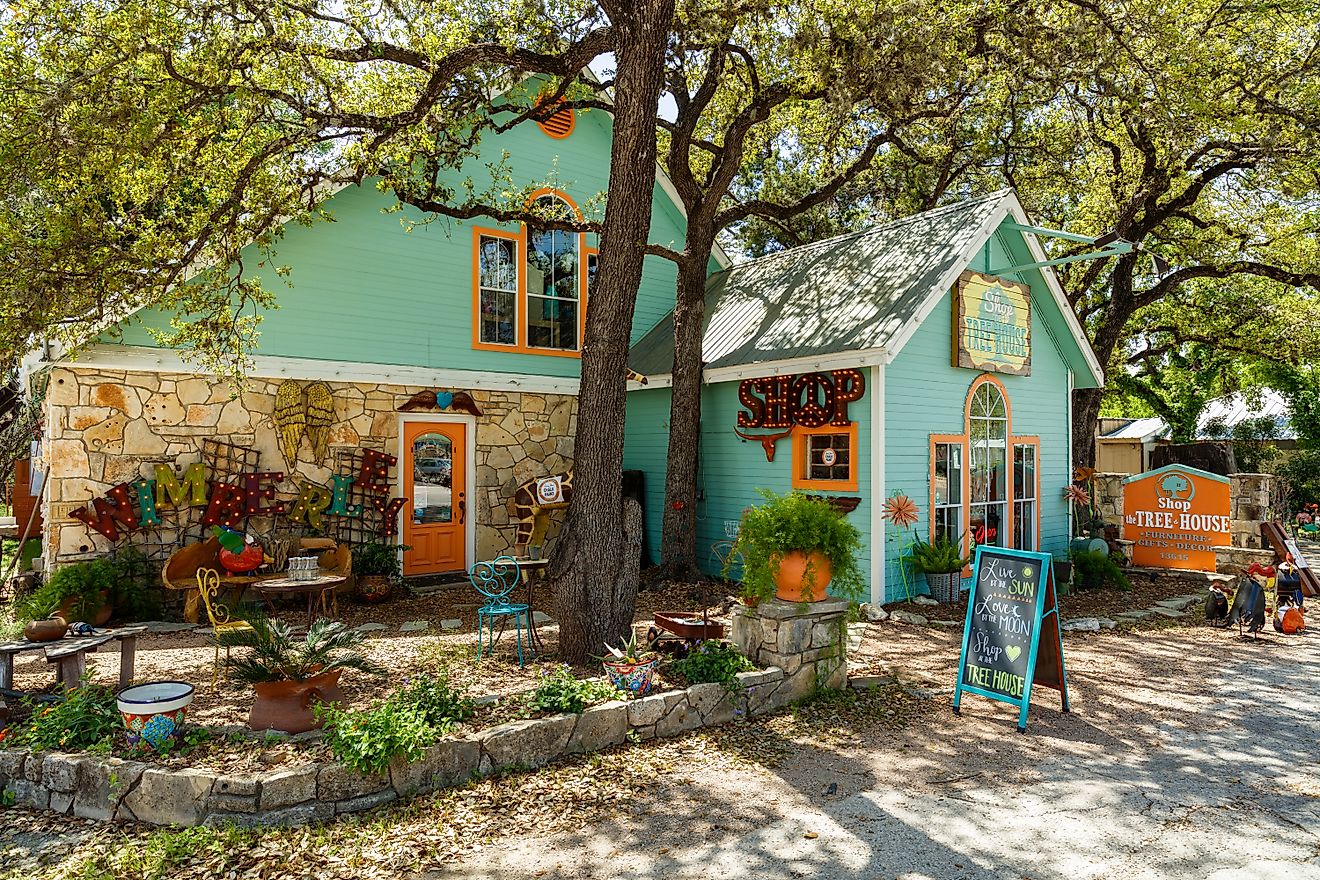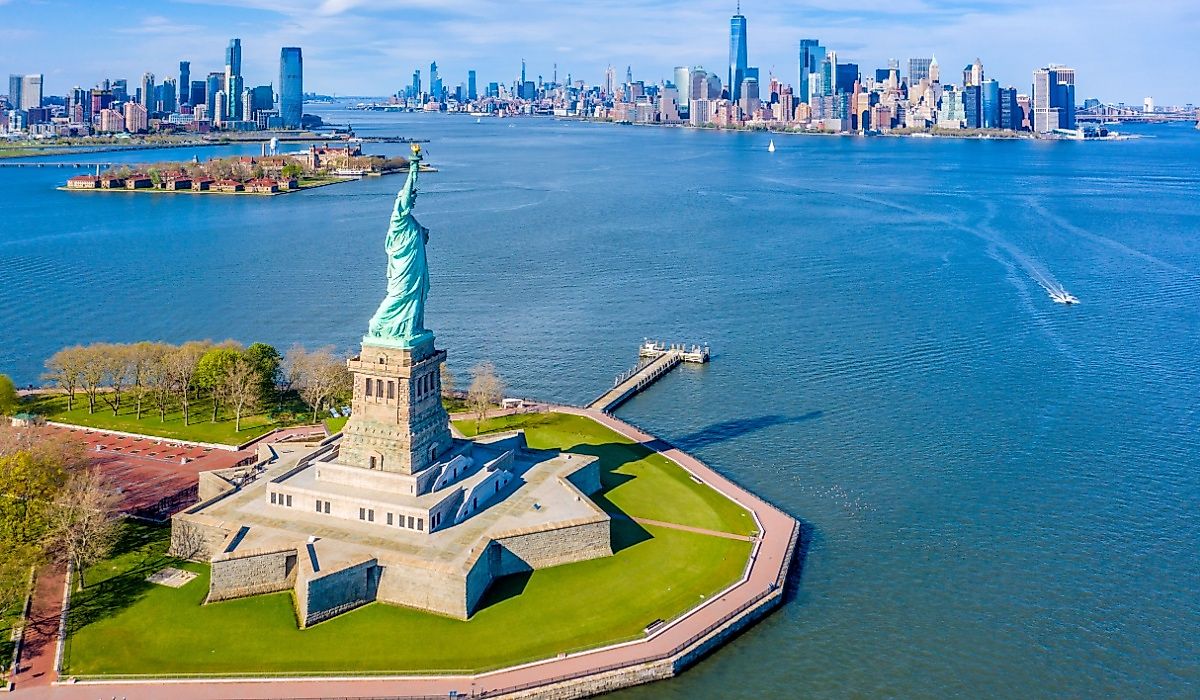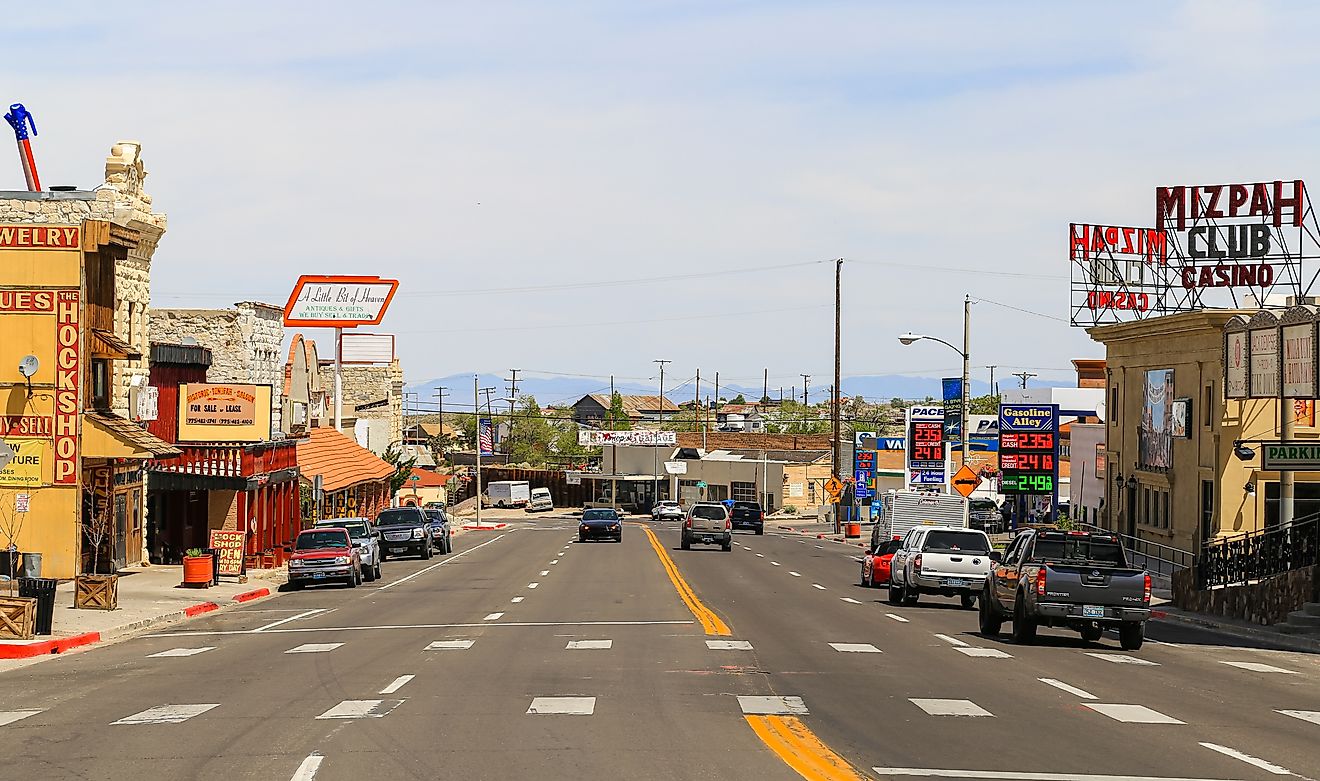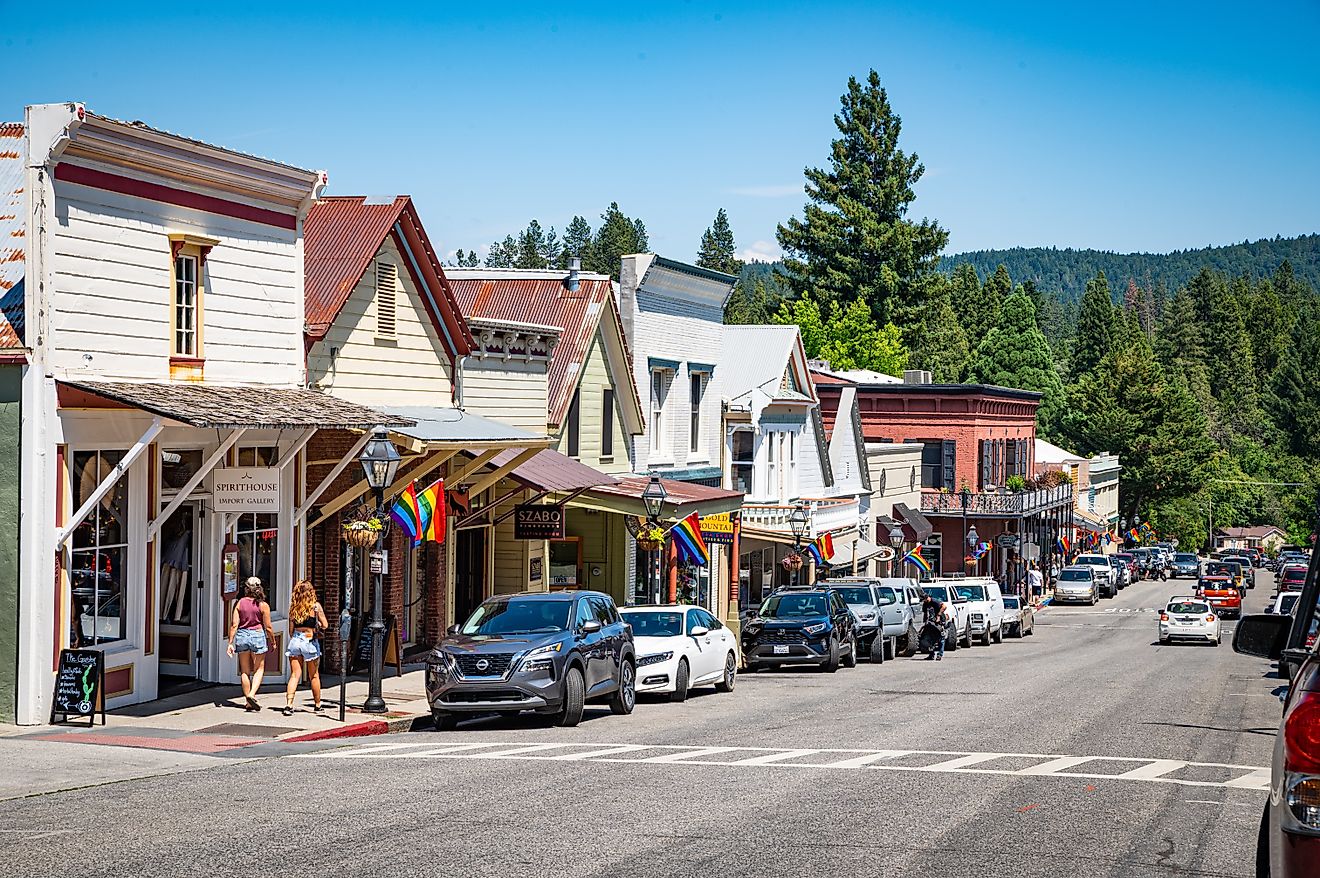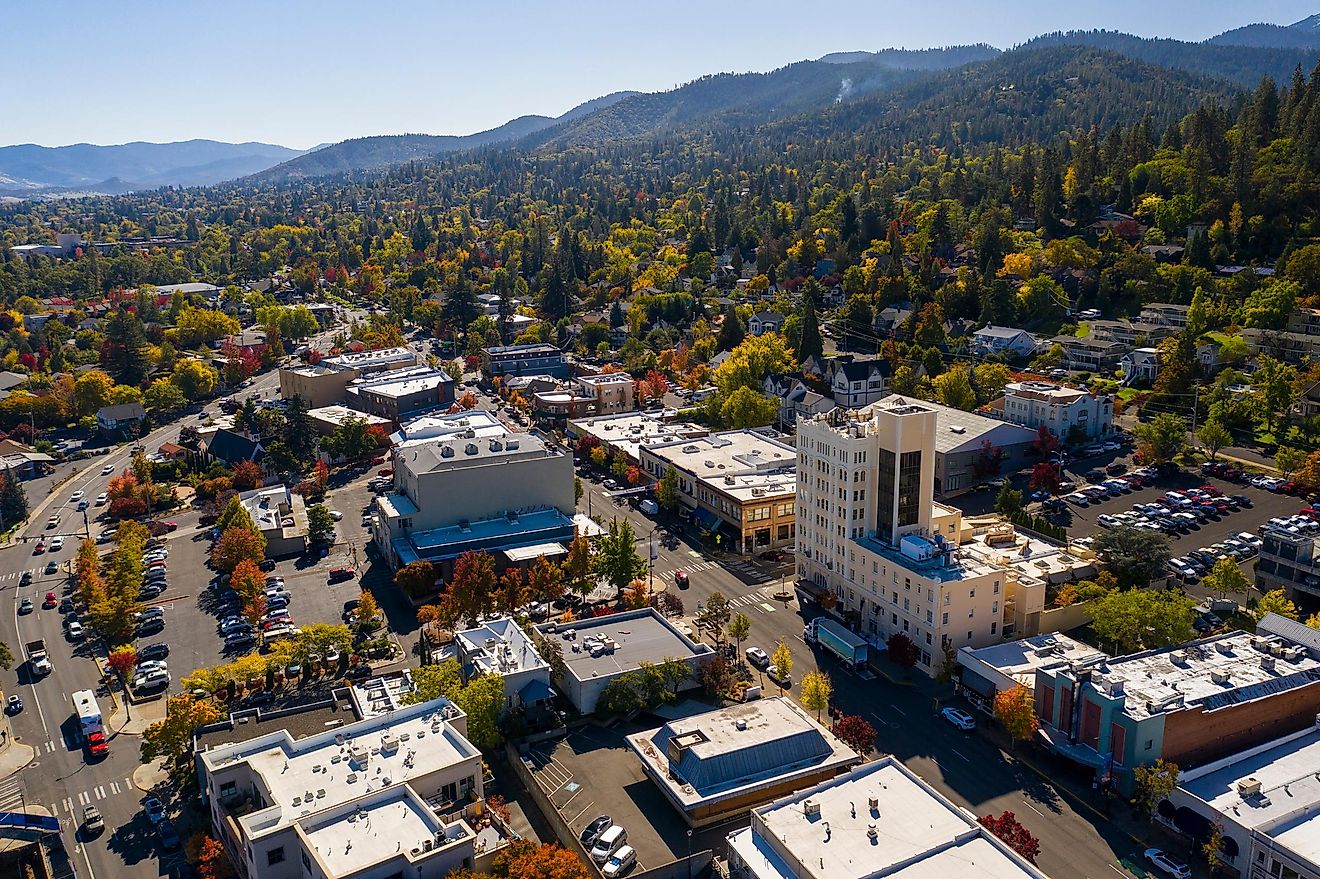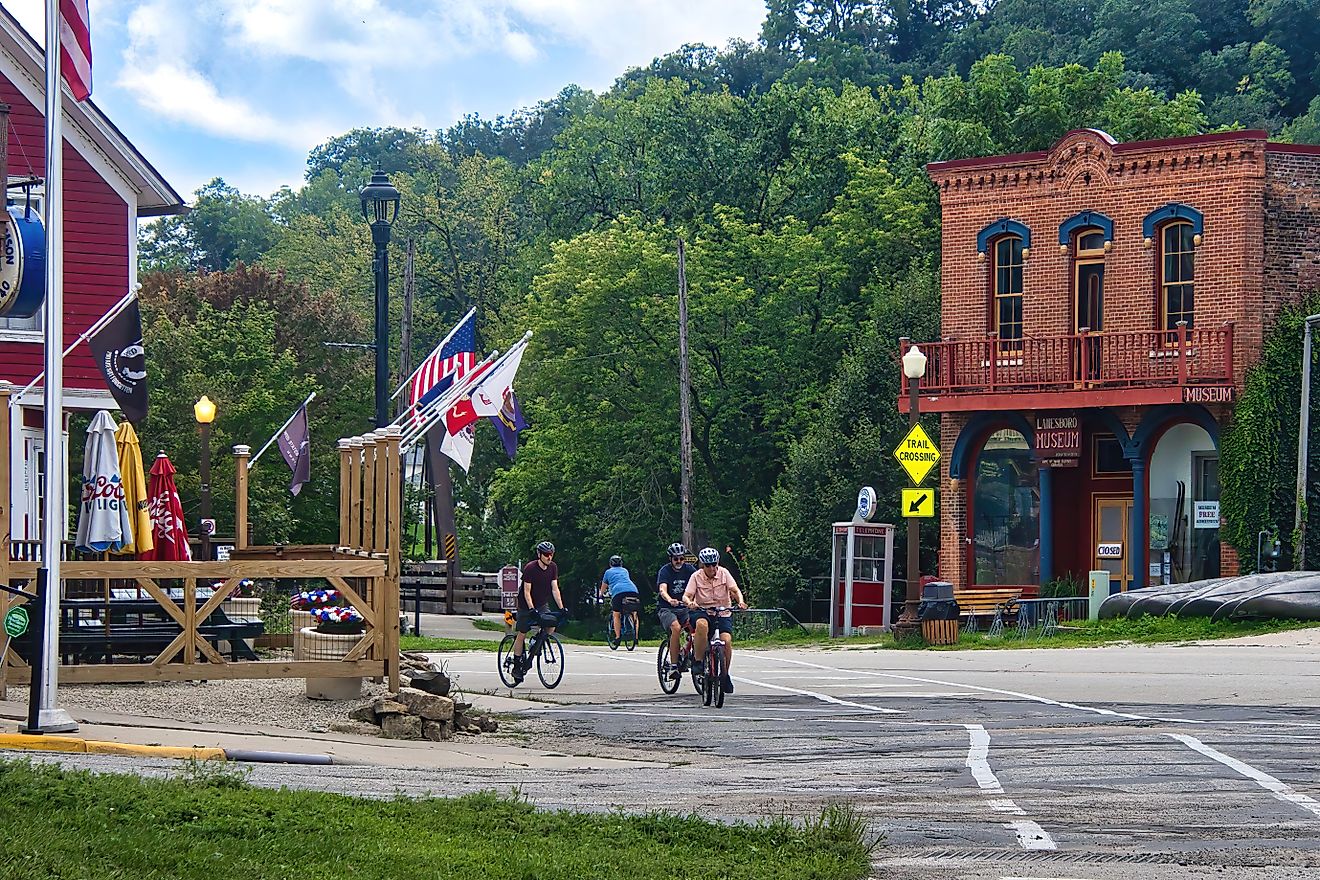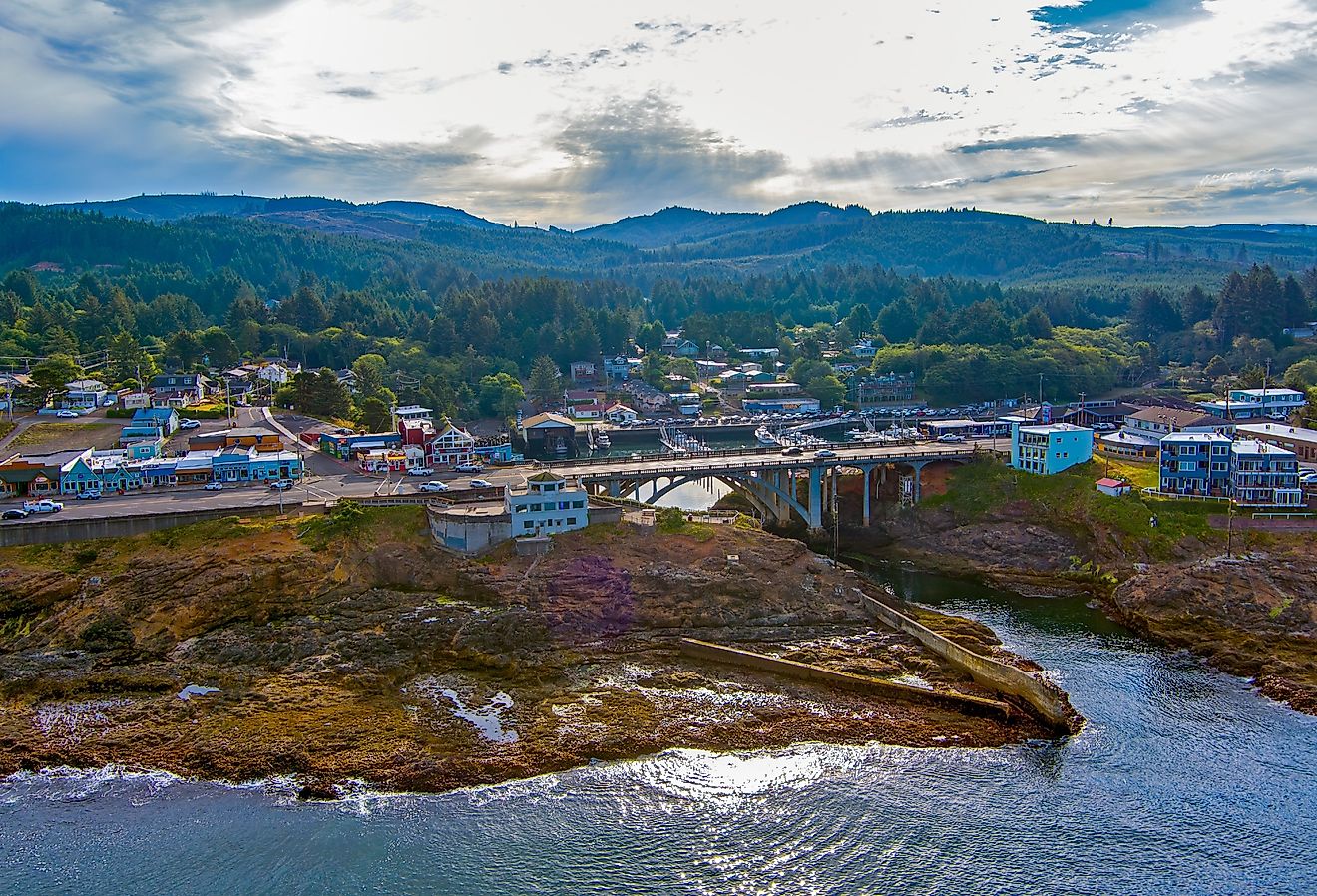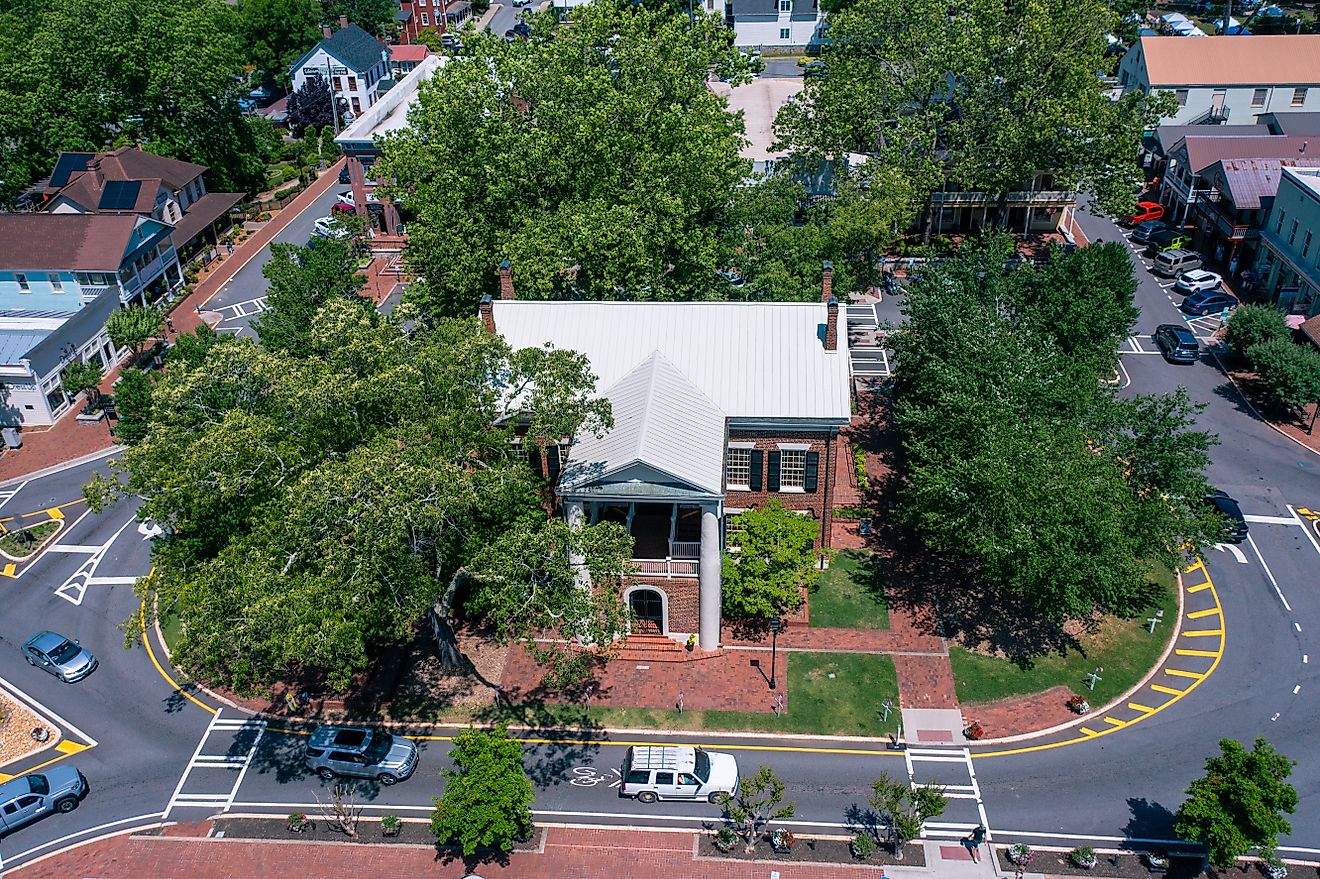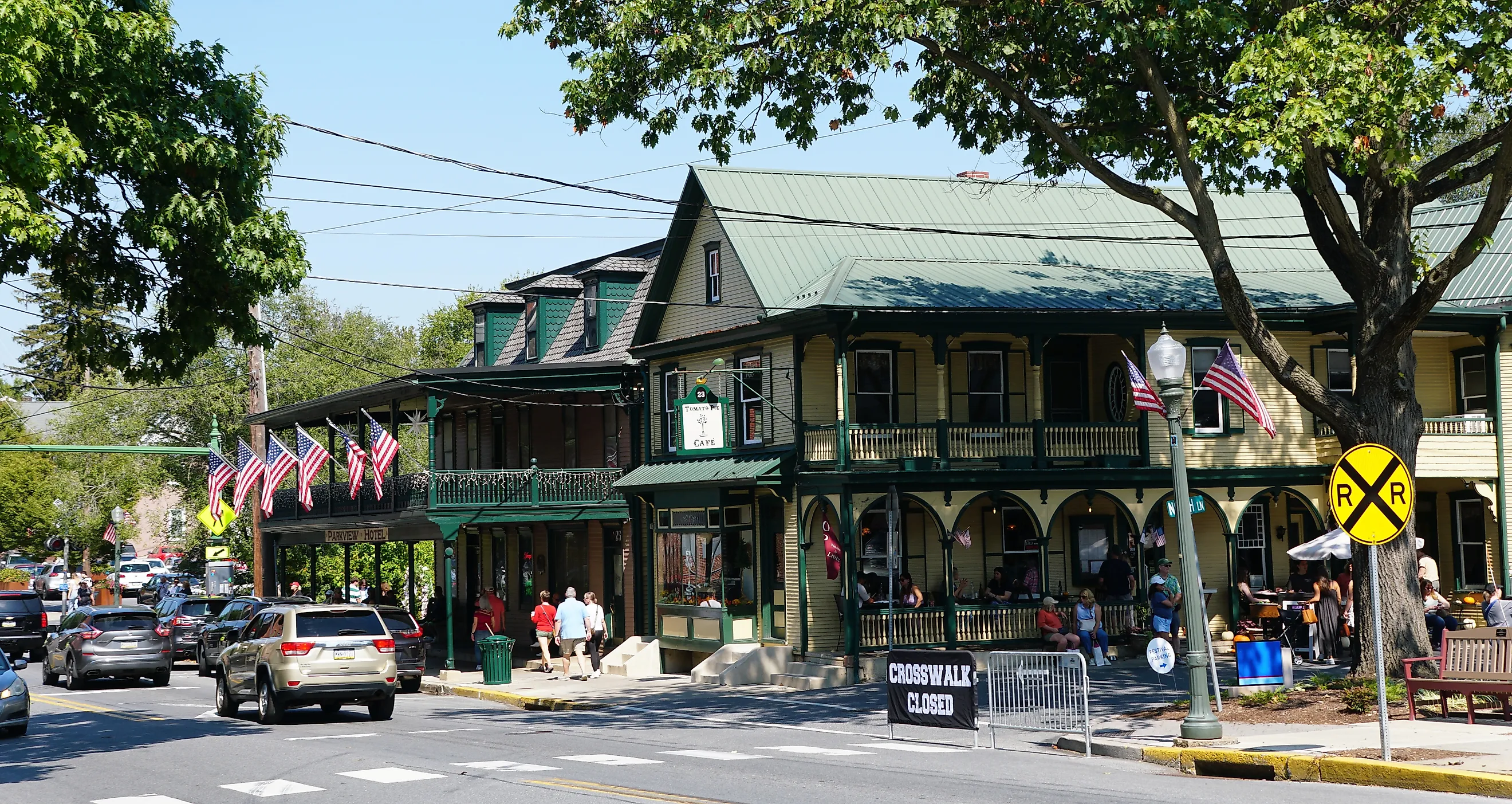
12 Standout Main Streets In Pennsylvania
Pennsylvania’s real story still runs down the middle of town. Not the interstate, but the block where a trolley clangs past a courthouse clock, a theater marquee warms the dusk, and a diner opens before sunrise. This guide walks 12 small boroughs whose main streets work as infrastructure, not ornament, places where a train still boards in Jim Thorpe, gas lamps burn in Wellsboro, and a blue-neon blade marks Doylestown’s County Theater while Mercer’s concrete castles sit a short stroll away. Built for everyday use, lit after dark, and legible from a single corner, these main streets are quintessential stops in Pennsylvania.
Doylestown
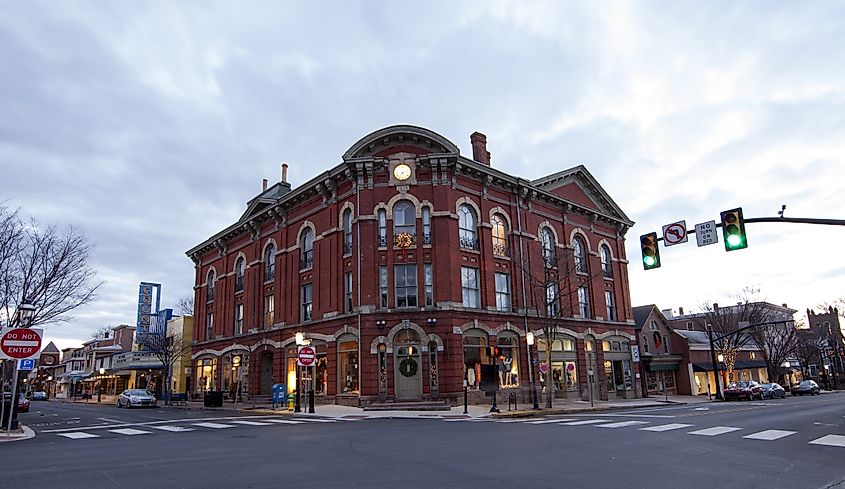
Doylestown’s main street stands out because it’s one of the only small towns in America with three castles built by the same man, archaeologist, collector, and cement eccentric, Henry Chapman Mercer. That vision of concrete artistry bleeds into the character of the town itself, where even the ordinary feels handcrafted. State and Main Streets meet at the center of a walkable grid anchored by Mercer’s Mercer Museum, a six-story vault of pre-industrial tools embedded in poured concrete. Across town, his Fonthill Castle, a concrete mansion with 44 rooms and 200 windows, offers a surreal glimpse into one man’s obsessions.
The County Theater, a restored 1938 Art Deco cinema, still glows blue neon above East State Street and shows indie films nightly. A block over, Nonno’s Italian Coffee Parlor pours espresso and scoops gelato on East State Street, while HONEY on Shewell Avenue serves a shareable, modern American menu (think risotto cakes and foie gras sliders). In the heart of town, the James A. Michener Art Museum exhibits regional Pennsylvania impressionists in a former jail yard wrapped in high stone walls.
West Chester
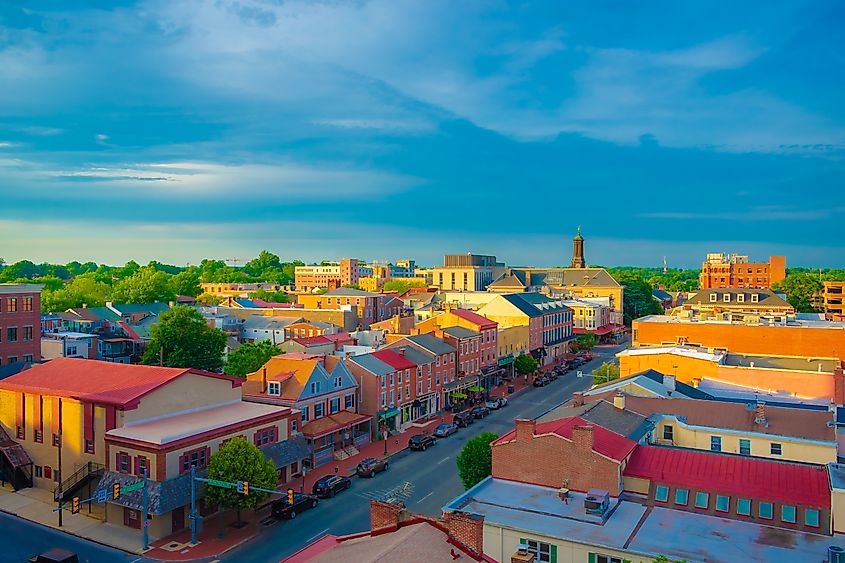
West Chester announces itself with its red-brick courthouse clock tower rising above Gay Street, a classical gesture in a modern borough. A town of fewer than 20,000 residents, West Chester hosts one of Pennsylvania’s only town squares bounded by a grid of streets whose names, Matlack, Chestnut, and Church, recall 18th-century roots. This historic infrastructure frames Gay and High Streets, which hum with civic purpose: council meetings, protests, farmers' markets, parades.
On Gay Street, Stove & Tap - West Chester does buttermilk fried chicken and biscuits; a few doors away Gryphon Coffee Co. pulls shots and bakes pastries at 111 W Gay. Around the corner, the Chester County History Center anchors High Street with archives and exhibits, and evenings cluster at Limoncello Ristorante on N Walnut. A block up High, Uptown! Knauer Performing Arts Center stages plays and concerts, while Marshall Square Park to the northeast and Everhart Park to the southwest frame the downtown grid with easy walking greens.
Phoenixville
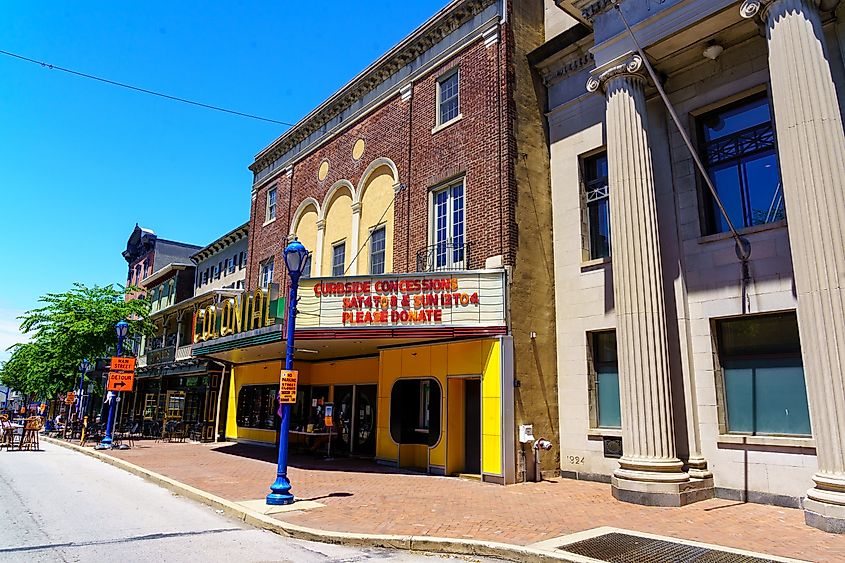
Phoenixville announces itself with the rusted steel arches crossing Main Street, relics of the steel mill era that defined the town’s 19th-century growth. Its enclave of old foundries, canals, and rail infrastructure shaped Bridge Street into a nexus for industrial afterlives repurposed into galleries, breweries, and theaters. That skeletal iron greets you before storefronts, reminding visitors that this town was forged in flame and forged again into art.
Along Bridge Street, the Colonial Theatre, a restored vaudeville house, hosts “Blobfest” each summer and programs classic films year-round. On Bridge Street, Root Down Brewing Co. pours house IPAs and lagers inside a former firehouse, with tacos and pub plates from the taproom kitchen. A few doors away, Stable 12 Brewing Company runs a full kitchen beside its brewhouse, while Steel City Coffeehouse & Brewery a block east programs live music with espresso and beer. On a side block, the Phoenixville Farmers’ Market sets up on Saturdays along French Creek under the Veterans Memorial Gay Street Bridge. Just off Main, the Schuylkill River Trail crosses the Mont Clare Bridge, and walkers and cyclists link town to Mont Clare and beyond.
Media
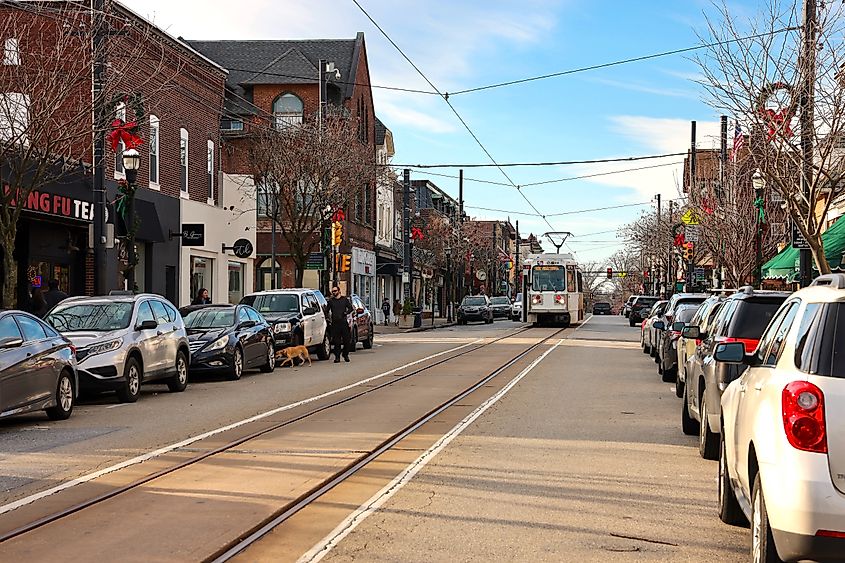
Media draws notice as America’s first Fair Trade Town (2006), a civic identity that meshes with State Street’s SEPTA Route 101 trolley and a strip of storefronts built over successive generations. The trolley rumbles through the heart of what many think of as Media’s main street, threading cafés, shops, and civic energy into a compact stretch.
State Street houses the Media Theatre, a restored 1927 vaudeville house now showing musicals, film, and concerts. Across the street, Ocean City Coffee Company roasts and serves drip, cold brew, and beans to-go. In a red-brick building close by, the Delaware County Institute of Science exhibits natural history and local artifacts. At the corner of State and Monroe, Bookish Notions stacks first editions and new releases in floor-to-ceiling shelves. North of downtown, Rose Tree Park spans roughly 120 acres with walking paths, picnic lawns, and an amphitheater for the county’s Summer Festival.
Kennett Square
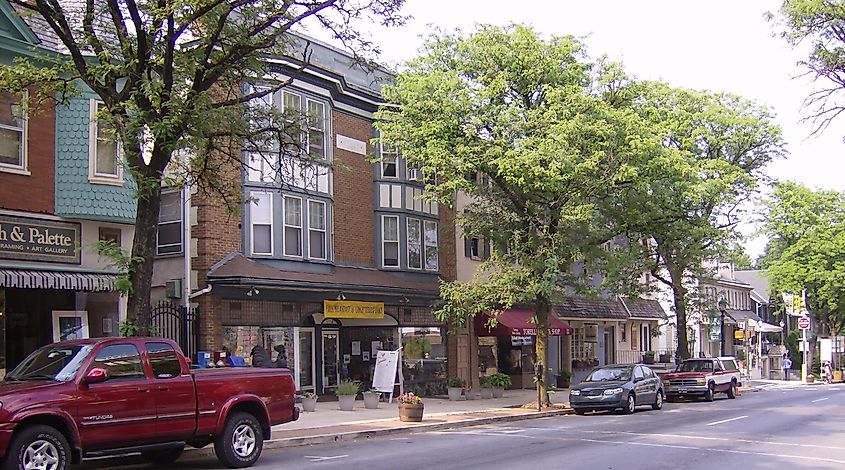
Kennett Square arrives on the map as America’s Mushroom Capital, a title derived from decades of underground cultivation, complete with a Mushroom Walk, mushroom-themed murals, and an annual Mushroom Festival. That identity seeps into State Street, where fungiculture meets boutique shops and dining rooms in tight red-brick storefronts. The town’s identity is rooted in controlled darkness: the cellars full of fungaria beneath the flats, the local growers’ tight schedules, the secretive spawn recipes.
On State Street, Talula’s Table commands attention with vegetable-forward tasting menus, sourcing mushrooms from nearby growers. Down the block, La Verona serves wood-fired pizzas and charcuterie while patrons peer at vintage mushroom prints lining the walls. The Creamery offers indoor-outdoor seating and hosts weekend craft breweries. At Pâtisserie Lola on West State, lines form for kouign-amann, fruit tarts, and quiche. A short walk from State, Longwood Gardens spreads over 1,077 acres with seasonal displays, water fountains, and orchid houses.
Gettysburg
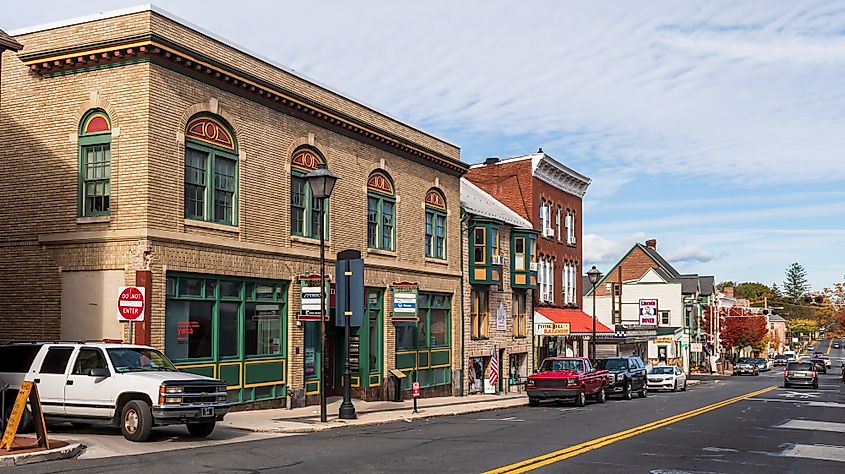
Gettysburg steps off the map as a small town built around a turning point. In July 1863, three days of battle took place on fields within marching distance of today’s Chambersburg Street, Baltimore Street, and the courthouse square. That uneasy adjacency, tourism and memory, commerce and graves, gives Gettysburg’s main streets a persistent duality. Tour buses and Civil War reenactors mingle at the corners where flags fly beside B&Bs and bookstores.
On Baltimore Street, the Dobbin House Tavern, built in 1776, welcomes diners into stone rooms once used as an Underground Railroad station. A block toward the square, the Lincoln Diner on Carlisle Street serves all-day breakfasts in a stainless railcar. The Gettysburg National Military Park Museum & Visitor Center houses original artifacts like Pickett’s Charge cannon and interactive battle maps. Lincoln Square hosts ghost walks at dusk, where guides narrate spectral stories outside the Shriver House and the Farnsworth House Inn. Chambersburg Street features riveted plaque markers of troop movements between souvenir shops and galleries.
Wellsboro
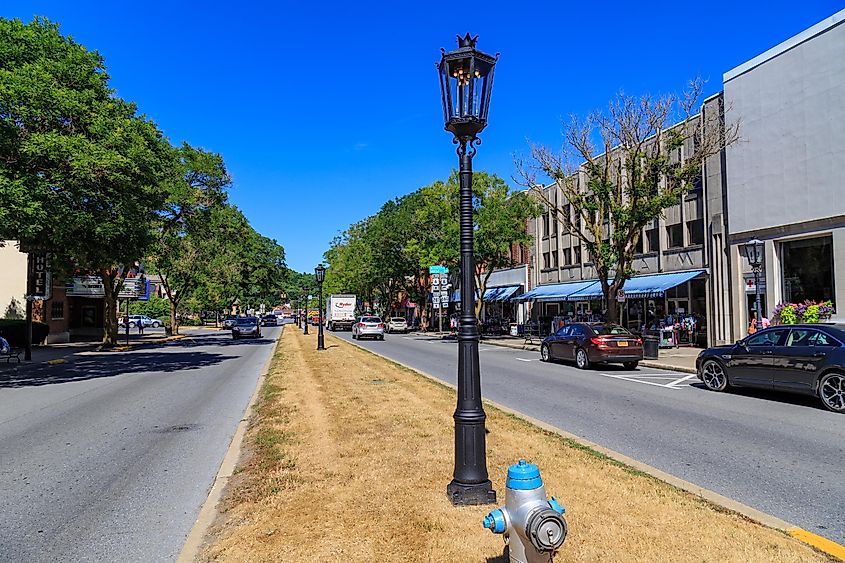
Wellsboro rings itself into memory with its array of gas-lit lamps lining Main Street and a cluster of Victorian storefronts surrounding The Green. The town sits at a fork between State Highways 6 and 660 in Tioga County, and just west lies the Pine Creek Gorge, often called the “Grand Canyon of Pennsylvania.” That proximity gives Wellsboro a bridge between wilderness and classic small-townism.
Main Street carries the frontage of the Arcadia Theatre, restored from a 1921 house into a cinema showing new releases and retrospectives. Directly across, the Deane Center for the Performing Arts maintains gallery exhibitions and local concerts inside a former church-school structure. On a corner block, Café 1905 inside Dunham’s Department Store pours coffee and serves pastries, while nearby the Wellsboro House Restaurant & Brewery offers broiled trout, prime rib, and hand-cut fries in wood-paneled rooms. Behind The Green, the Tioga County Historical Society Museum preserves regional artifacts like quilts, lumber-mill tools, and archival photographs. A few blocks off, you access the Pine Creek Rail Trail, where cyclists or walkers pass over trestles and through pine-shrouded gaps.
Ligonier
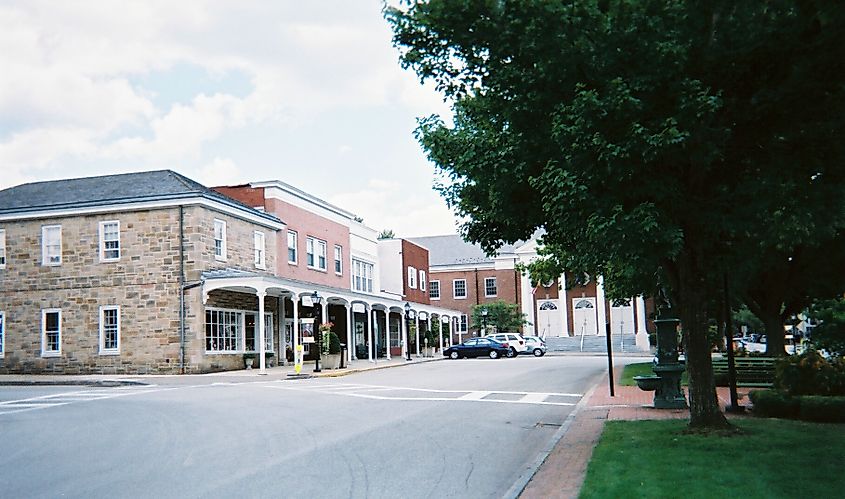
Ligonier announces itself at The Diamond, a streetside bandstand in the heart of town framed by a square of red-brick buildings and gas lamps. The town lies in the Laurel Highlands, minutes from Ohiopyle and Idlewild Park, but The Diamond gives Ligonier a center, a social engine around which shops, cafés, and galleries align. The name itself echoes: General Forbes built Fort Ligonier nearby during the French and Indian War campaigns in 1758; that martial heritage still shadows the town in reenactments and markers.
East Main Street opens to Abigail’s Coffeehouse, where espresso meets house-baked pastries. The Ligonier Valley Railroad Museum sits just downhill, preserving station history and rolling stock. The Kitchen on Main turns out American bistro plates for lunch and dinner just off the square. On West Main, The Toy Soldier Gallery displays model soldiers, miniatures, and military figures. A block off Main, the Fort Ligonier site preserves reconstructed ramparts, interpretive exhibits, and cannon displays.
Milford
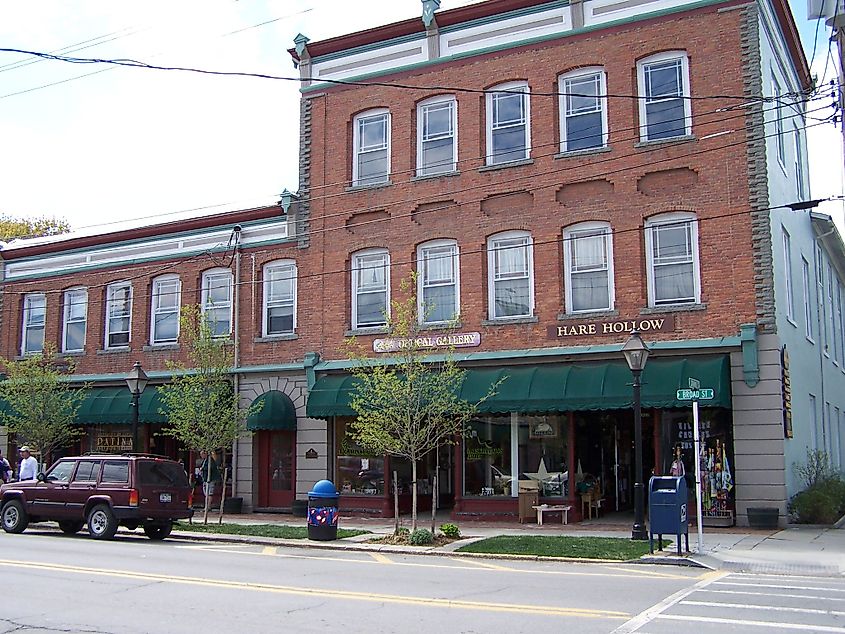
Milford stakes its identity at the confluence of Sawkill Creek and the Delaware River, where high water has shaped its architecture and street line. In the late 19th century, Milford grew as Pike County’s seat and a river town; civic life coalesced along Broad Street and in nearby neighborhoods tied to canal-era trade and conservation history.
Along Broad Street (US-6/209), Hotel Fauchère greets passersby with a painted lobby ceiling and period furniture. Across the way, Milford Theater screens films and hosts live performances in a restored venue. At The Columns Museum, the Pike County Historical Society preserves the 36-star “Lincoln Flag,” stained at Ford’s Theatre on April 14, 1865. On a side block, Waterwheel Café, Bakery & Bar hums beside a mill race with pastries by day and a bistro menu at night. A short walk from Broad, Ann Street Park provides riverside green and playgrounds; a bit farther uphill, the grounds at Grey Towers National Historic Site add formal walks at the Pinchot estate.
New Hope
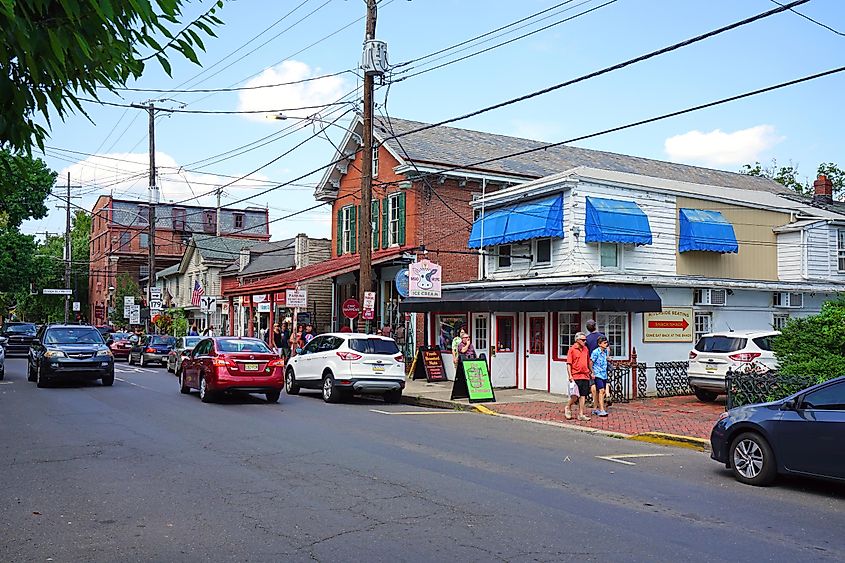
New Hope announces itself bridging the Delaware River to Lambertville via a narrow span, the bridge itself a daily reminder of two-state neighborliness. The town grew around canal trade and ferry crossings in the 18th century, and those roots still govern the way streets converge at the river’s edge. Bridge Street deposits you directly into the town’s bones, tight storefronts, gallery windows, old bricks stained by coal smoke.
Bridge Street hosts Bucks County Playhouse, where live theater dates to the 1930s and draws audiences from both sides of the river. A block south, Starbucks doubles as a people-watching perch; at the same time, local favorites like Logan Inn offer historic dining in timber-beamed rooms with menu items such as duck breast and seared scallops. At Gallery Row, you find portraits, abstracts, and sculpture in clustered studios. To the east, the towpath of the Delaware Canal lines the riverbank; visitors walk past old lockhouses among canal-side benches.
Jim Thorpe
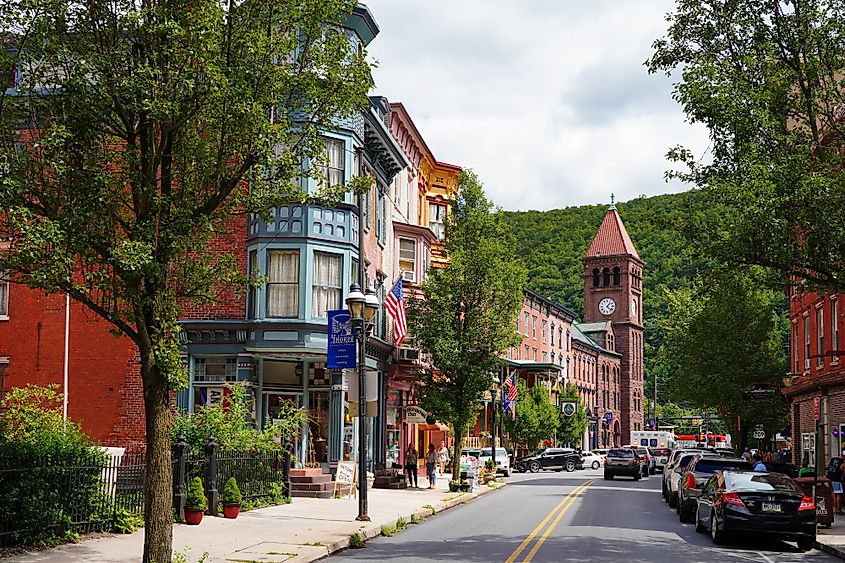
Jim Thorpe clings to the Lehigh River and slopes upward into switchback hills built by coal and carved by rail. Originally named Mauch Chunk, the town renamed itself in 1954 after Olympic athlete Jim Thorpe, whose remains are buried in a mausoleum near the edge of town. The name change was partly a publicity stunt, but the results stuck, now Broadway and West Broadway wind past steeples, rail depots, and ridgeline houses that resemble an Alpine village laid over anthracite roots.
The Lehigh Gorge Scenic Railway departs from the old Central Railroad of New Jersey station on Susquehanna Street, running north through tunnels and canyon walls. At 209 West Broadway, the Mauch Chunk Opera House hosts touring bands and local theater in an 1881 building once used for vaudeville. A short walk uphill leads to the Asa Packer Mansion, a preserved Italianate estate built by the Lehigh Valley Railroad founder in 1861, furnished with original chandeliers, silk wallpaper, and oil portraits. Molly Maguire’s Pub & Steakhouse on Broadway offers Guinness on tap and shepherd’s pie in a stone cellar once used as a company store.
Lititz
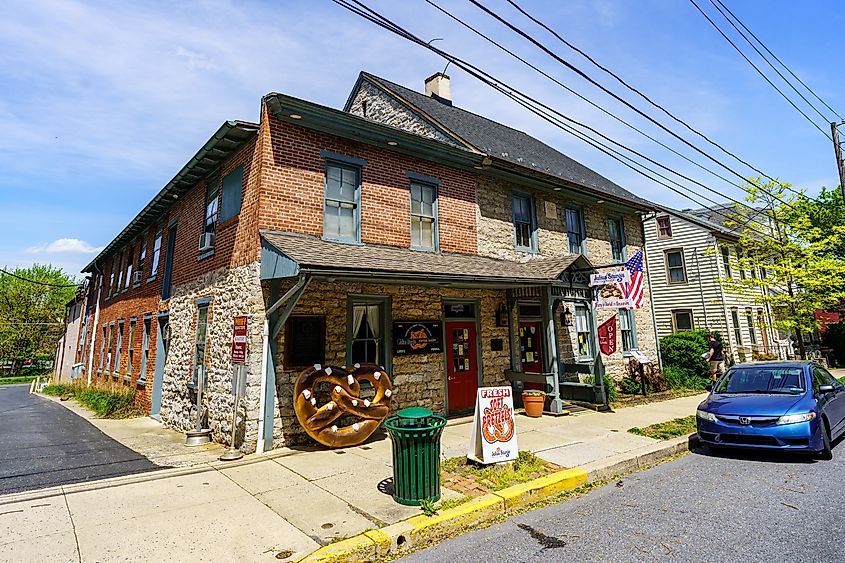
Lititz opens with a German clock face mounted on the Moravian Church tower, its hands cleaving the sky above Broad and East Main. The town traces to 1756 as a Moravian settlement, and that spiritual and communal planning still shapes its layout: Strawbridge & Clothier’s old company houses, hidden gardens, and walking alleys cling close behind the storefronts. The sense of design and intentionality are what distinguish Main Street.
Along Main (Broad to E. Main), Julius Sturgis Pretzel Bakery holds tight to heritage: there, customers witness dough twisting by hand just as it was in 1861. A few doors down, Wilbur Chocolate’s retail store sells historic Wilbur Buds and vintage candy jars. In the shadows behind Main lies Lititz Springs Park, with a turfed creek, cast-iron fountain, and footbridges over Lititz Run. At the corner of Main and South Broad, the General Sutter Inn sits above Bulls Head Public House, whose cask ales and pub fare anchor the square. The Lititz Museum, housed in a restored 19th-century structure adjacent to the park, exhibits county memorabilia: farmhouse tools, spinning wheels, and historical portraits.
Pennsylvania’s best main streets aren’t museum sets; they’re working corridors that prove the Four S’s. From trolley-wired State Street in Media to gas-lit Wellsboro and rail-born Jim Thorpe, each place mixes a stage, a story, a staple, and a stroll into daily habit. The result is legibility: theaters that book shows, bakeries that open early, parks and squares that hold the center. Follow the lights; the state’s heart beats downtown.
